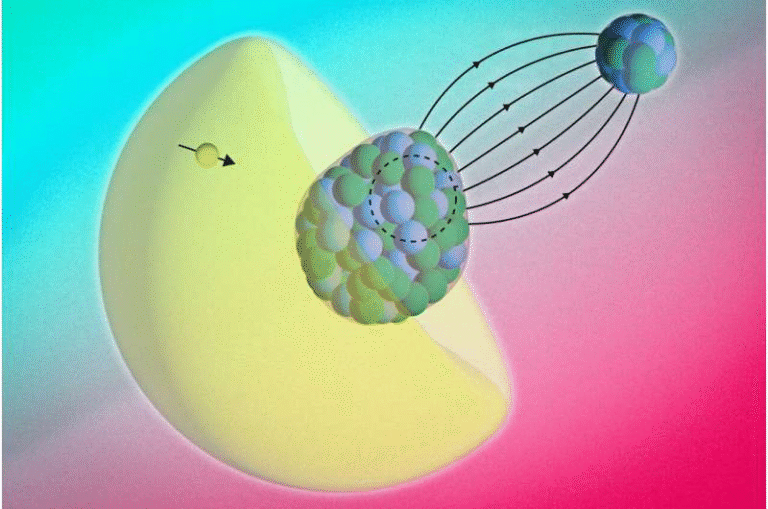Perovskite Films Show Ultrafast Quantum Light Emission in Cambridge Study

A new study from the University of Cambridge has revealed that halide perovskite materials can emit light on incredibly short timescales—around 2 picoseconds, or two trillionths of a second. This remarkable discovery, published in Nature Nanotechnology, shows that perovskites can handle light far faster than most known semiconductors, opening the door to ultrafast quantum light sources and next-generation photonic technologies.
What the Researchers Found
The research team, led by Professor Sam Stranks at Cambridge’s Optoelectronic Materials and Device Spectroscopy Group, focused on a well-known perovskite compound called formamidinium lead iodide (FAPbI₃). These materials have already gained fame for their role in efficient and affordable solar cells, but this new study reveals an entirely new capability—ultrafast quantum emission.

Credit: Nature
By using a combination of ultrafast spectroscopy, optical microscopy, and electron microscopy, the scientists observed quantum transients occurring on picosecond timescales when the material was cooled to low temperatures. In simpler terms, they saw light being emitted almost instantaneously after excitation, which is a signature of quantum behavior typically found only in very high-end, carefully engineered materials.
What’s especially interesting is that this effect appeared in bulk films made through scalable solution or vapor processing, rather than in specialized, lab-grown single crystals. This suggests that such quantum effects could one day be harnessed in practical, low-cost devices rather than only in laboratory settings.
The Secret Lies in Nanodomain Superlattices
The Cambridge team discovered that the light emission originated from nanodomain superlattices within the material. These are tiny, regularly repeating regions of the crystal structure that create alternating domains, which act a bit like quantum wells—regions where electrons and holes (the charge carriers of light emission) can tunnel through at lightning speed.
This quantum tunneling between domains is what allows such rapid radiative recombination—the process by which absorbed energy is re-emitted as light. The result is an incredibly fast emission of photons, occurring in about two trillionths of a second.
This kind of ultrafast behavior isn’t typically expected in perovskites, which are usually known for their strong optical absorption and good efficiency in solar and LED applications—but not necessarily for quantum-level speed. The discovery highlights just how versatile these materials can be.
Why This Is a Big Deal
The implications are wide-ranging. The ultrafast quantum effects seen in these perovskite films could enable next-generation photonic components like superfast light emitters, optical switches, or quantum communication devices. Traditionally, such applications have relied on expensive materials like gallium arsenide or indium phosphide, which require complex and costly fabrication.
If perovskites can deliver similar performance through simple, scalable production methods, it could make high-speed quantum technologies much more accessible. The findings also emphasize how perovskites could go beyond solar and LED technologies and into quantum photonics, a field that merges quantum physics with optical communication and computing.
The Limitations and Challenges
While the results are exciting, the researchers themselves emphasize caution. All the measurements showing picosecond quantum transients were conducted at low temperatures, often near 5 Kelvin, which is close to absolute zero. At these temperatures, quantum effects are more easily observed because thermal noise is minimized.
The study does not report room-temperature results, meaning it’s still unclear whether the same ultrafast quantum behavior would appear under normal operating conditions. There’s also no mention of quantum-optics performance metrics like single-photon purity or photon indistinguishability, which are crucial if the material is to be used in true quantum-light applications.
In other words, while this is an impressive step forward, the findings still belong to the realm of early-stage physics rather than ready-to-use technology.
How the Experiments Were Done
To investigate these effects, the team used transient absorption spectroscopy, a powerful tool for measuring how quickly light interacts with materials. The technique involves sending an ultrashort laser pulse to excite the sample and then probing how the material’s absorption changes over time.
At low temperatures, they observed distinct absorption peaks just above the bandgap—an indication of discrete quantum energy states. The decay time of these excited states was measured at approximately 2 picoseconds, showing that the light emission was not only fast but also highly coherent at that scale.
The photoluminescence spectra from these films revealed extremely narrow linewidths—as small as 2 nanometers (about 4 meV)—indicating that the emission was highly pure and originated from well-defined quantum states within the nanodomain superlattice.
Understanding Perovskites and Their Potential
Perovskites have taken the scientific world by storm over the last decade. Structurally, they follow the formula ABX₃, where A is an organic or inorganic cation (like formamidinium), B is a metal (often lead or tin), and X is a halide (iodine, bromine, or chlorine). Their crystal structure gives them exceptional optical and electronic tunability, allowing scientists to tweak their properties by changing chemical composition or processing conditions.
Initially, perovskites were pursued mainly for solar cells, where they have already achieved power conversion efficiencies exceeding 26%, rivaling traditional silicon. Later, researchers explored them for LEDs, lasers, and photodetectors. The current study adds another dimension: quantum photonics, where the material itself could become the foundation for quantum light sources and ultrafast optical circuits.
Because perovskites can be processed from simple solutions at relatively low temperatures, they’re cheaper to make and easier to scale than most conventional semiconductors. If researchers can control their nanostructure and stability, they could become the backbone of low-cost quantum and optoelectronic devices.
The Road Ahead
There are still many questions to answer. For instance, can this ultrafast emission occur at room temperature, or does it only appear in cryogenic conditions? Can the nanodomain structure be precisely engineered to control emission properties like wavelength, efficiency, or coherence? And how stable are these materials under real-world conditions such as light exposure, moisture, or heat?
Perovskites have long struggled with stability issues, especially in humid or hot environments. For quantum or optoelectronic applications, maintaining structural integrity and optical quality over long periods will be crucial. Researchers are already experimenting with protective coatings, compositional engineering, and new fabrication methods to overcome these problems.
If these challenges are met, the ultrafast light emission reported in this study could mark the beginning of a new era for perovskite-based quantum devices. It suggests that materials once considered mainly for solar panels might soon be driving some of the fastest and most advanced optical technologies in existence.
Why This Discovery Matters
In the broader context, the discovery reinforces the idea that quantum behavior isn’t confined to expensive, niche materials or complex fabrication setups. It can arise naturally in accessible, solution-processed materials like perovskites—if their internal structures are well understood and controlled.
This opens up an entirely new line of research connecting materials science, solid-state physics, and quantum optics. It also aligns with a global push toward scalable quantum technologies, which aim to bridge the gap between laboratory breakthroughs and real-world applications.
Whether perovskites can deliver on this promise remains to be seen, but one thing is clear: they continue to surprise researchers with new and powerful capabilities that could reshape the future of light-based technologies.
Research Paper: Picosecond Quantum Transients in Halide Perovskite Nanodomain Superlattices – Nature Nanotechnology (2025)





